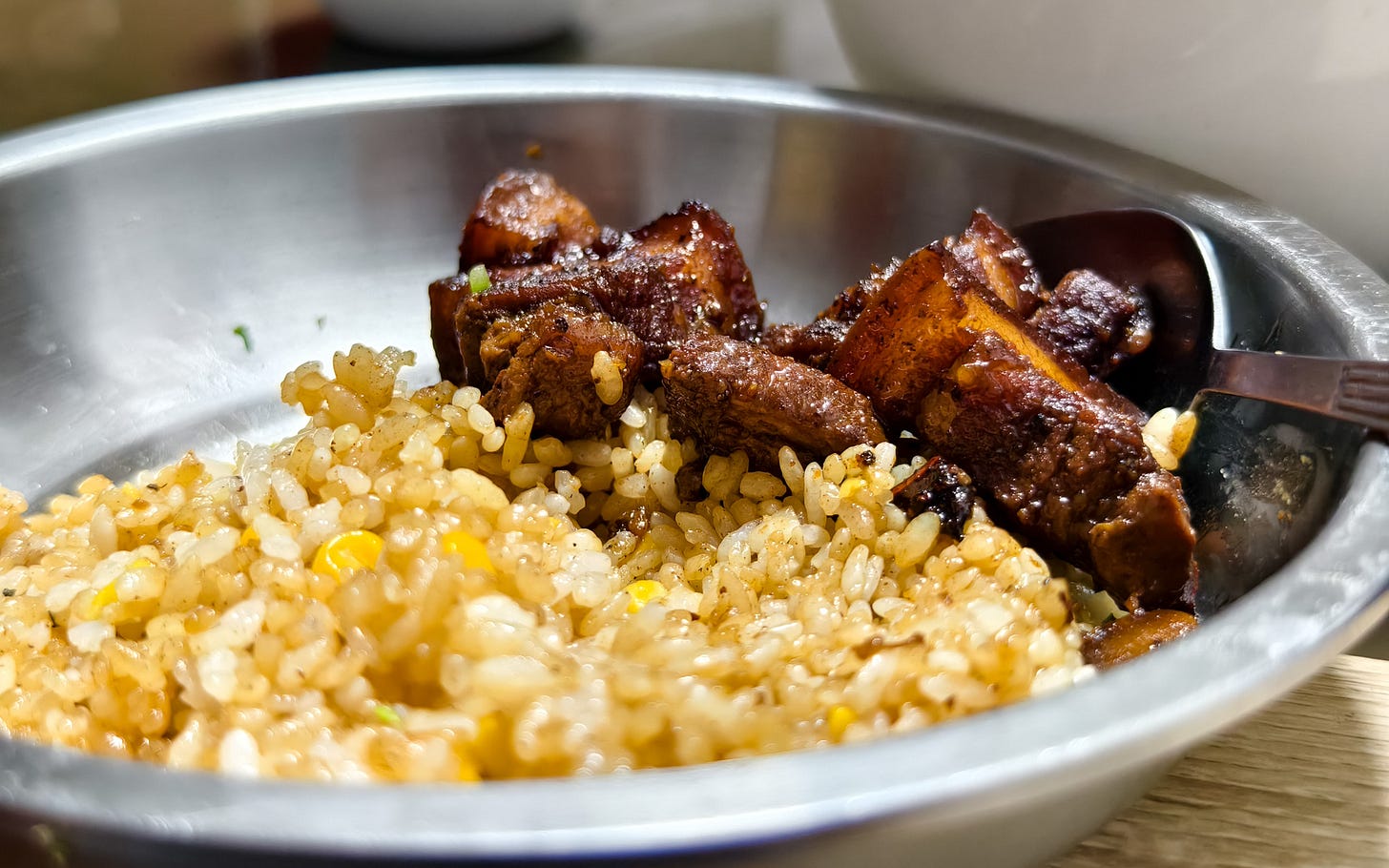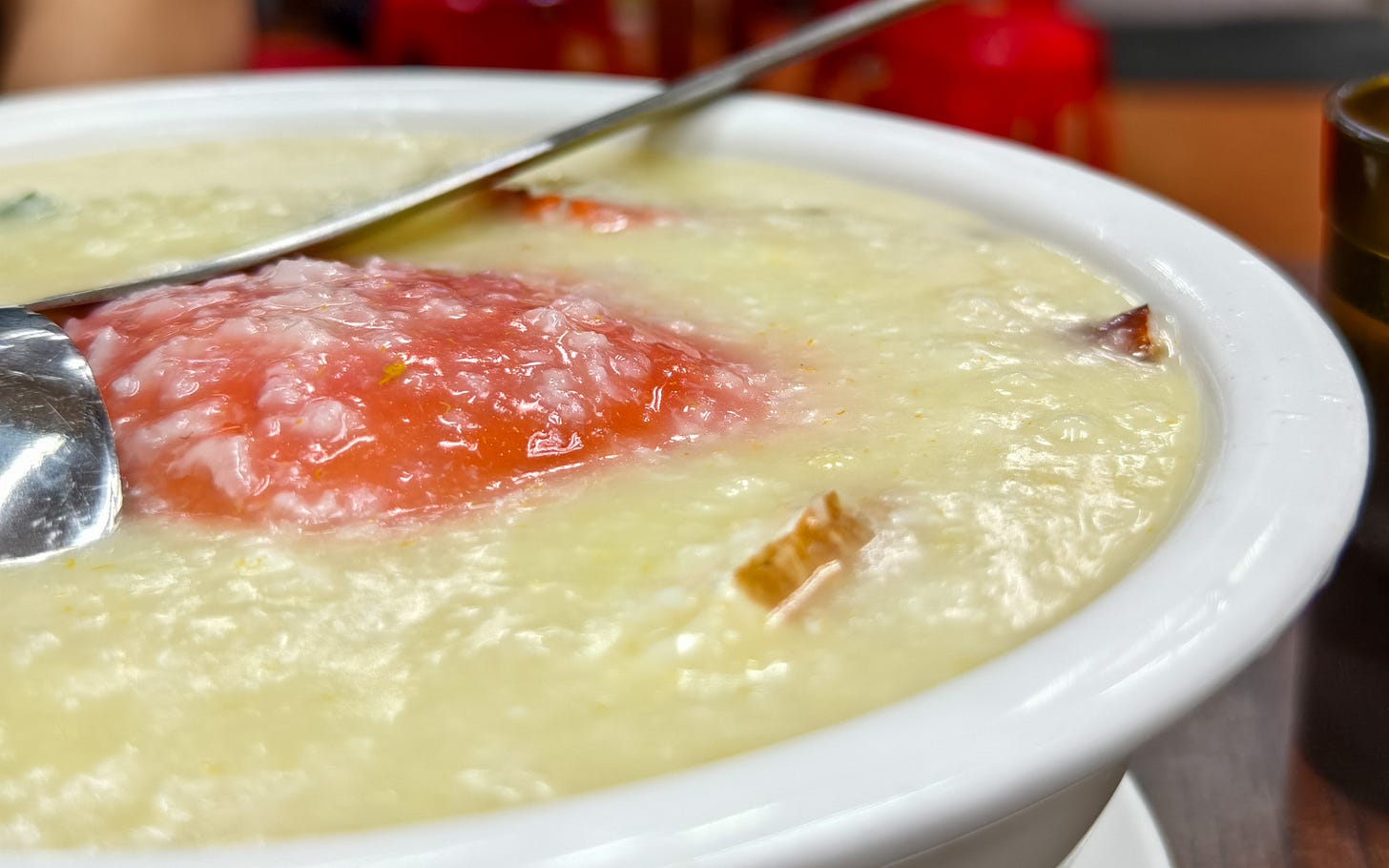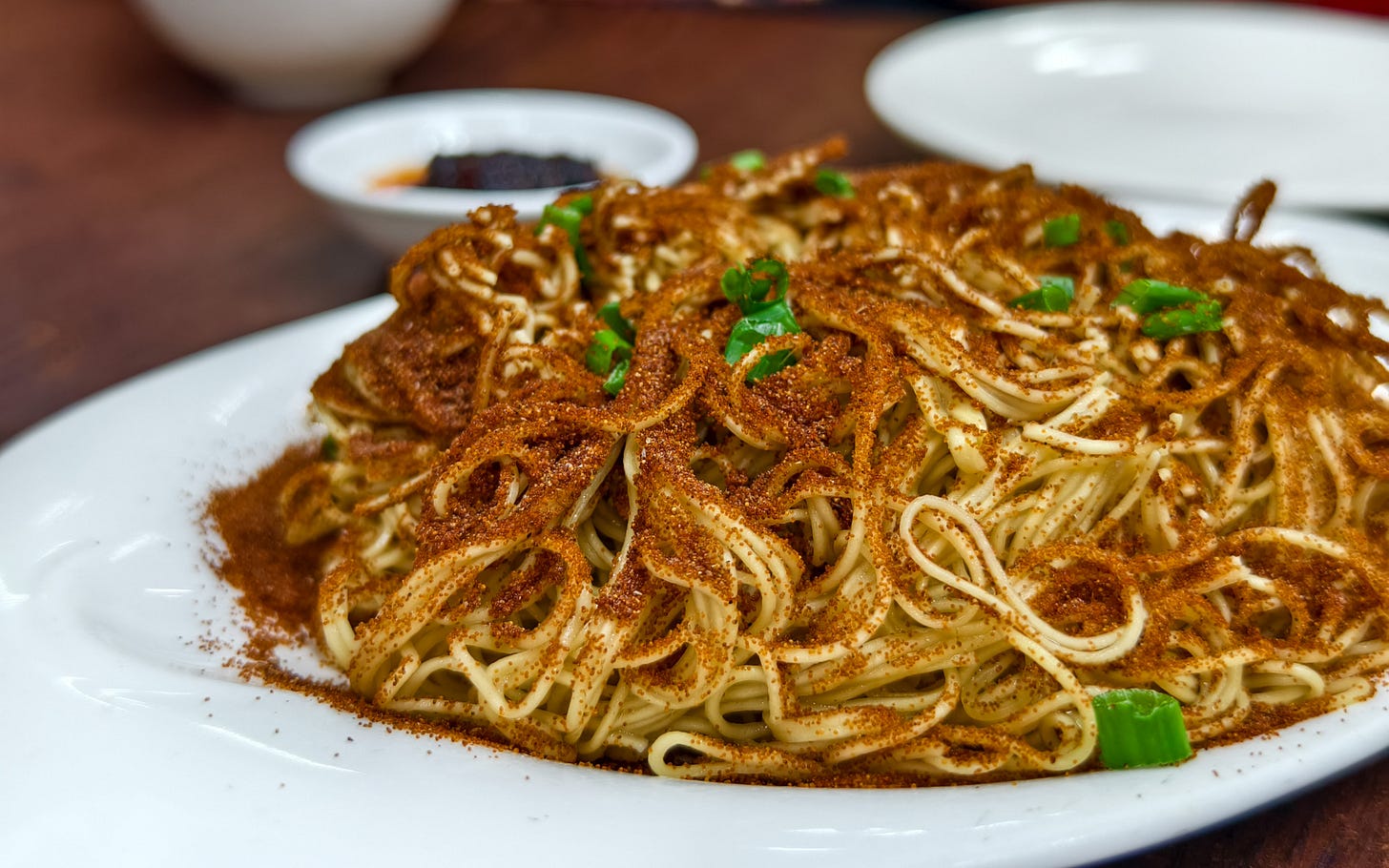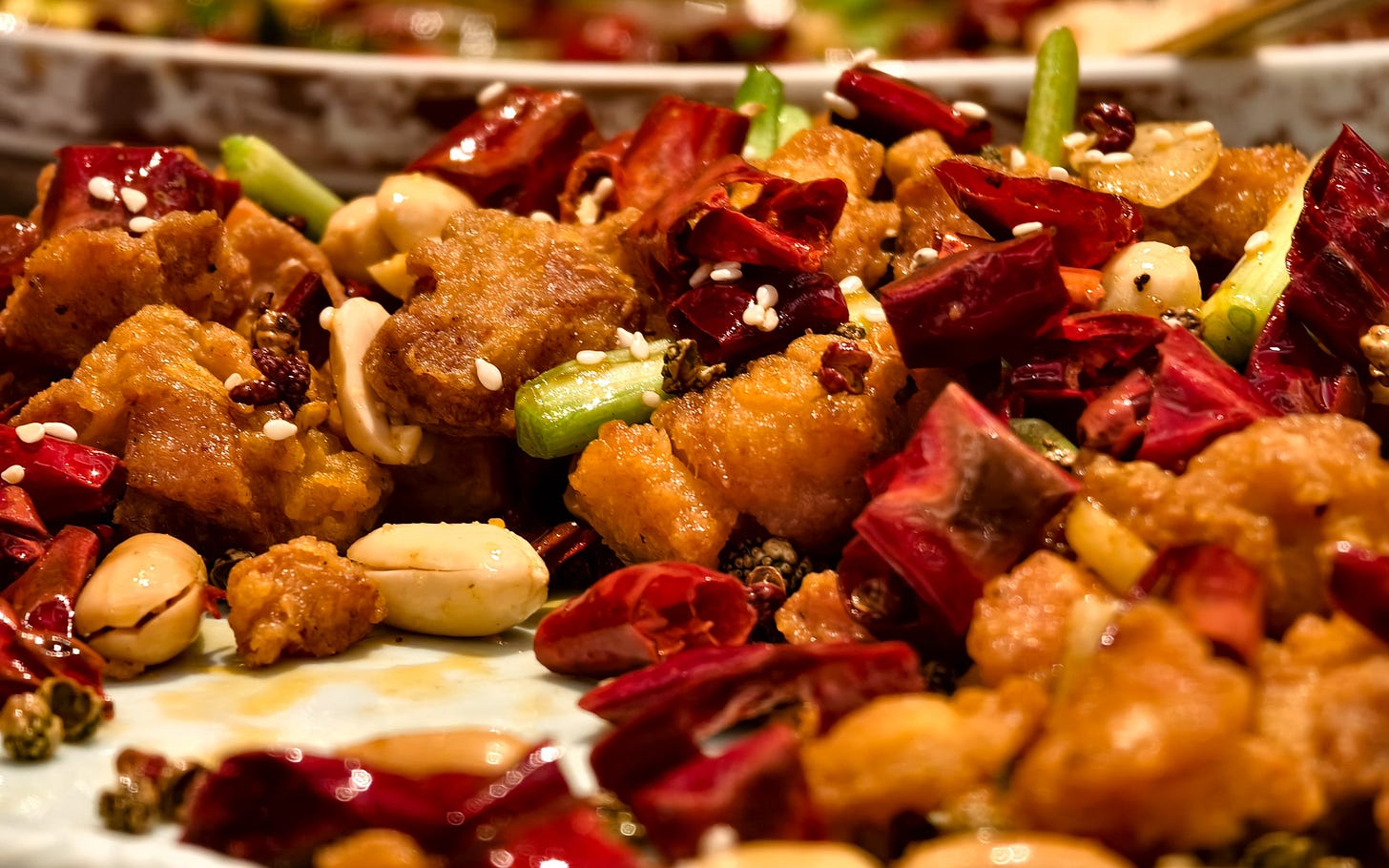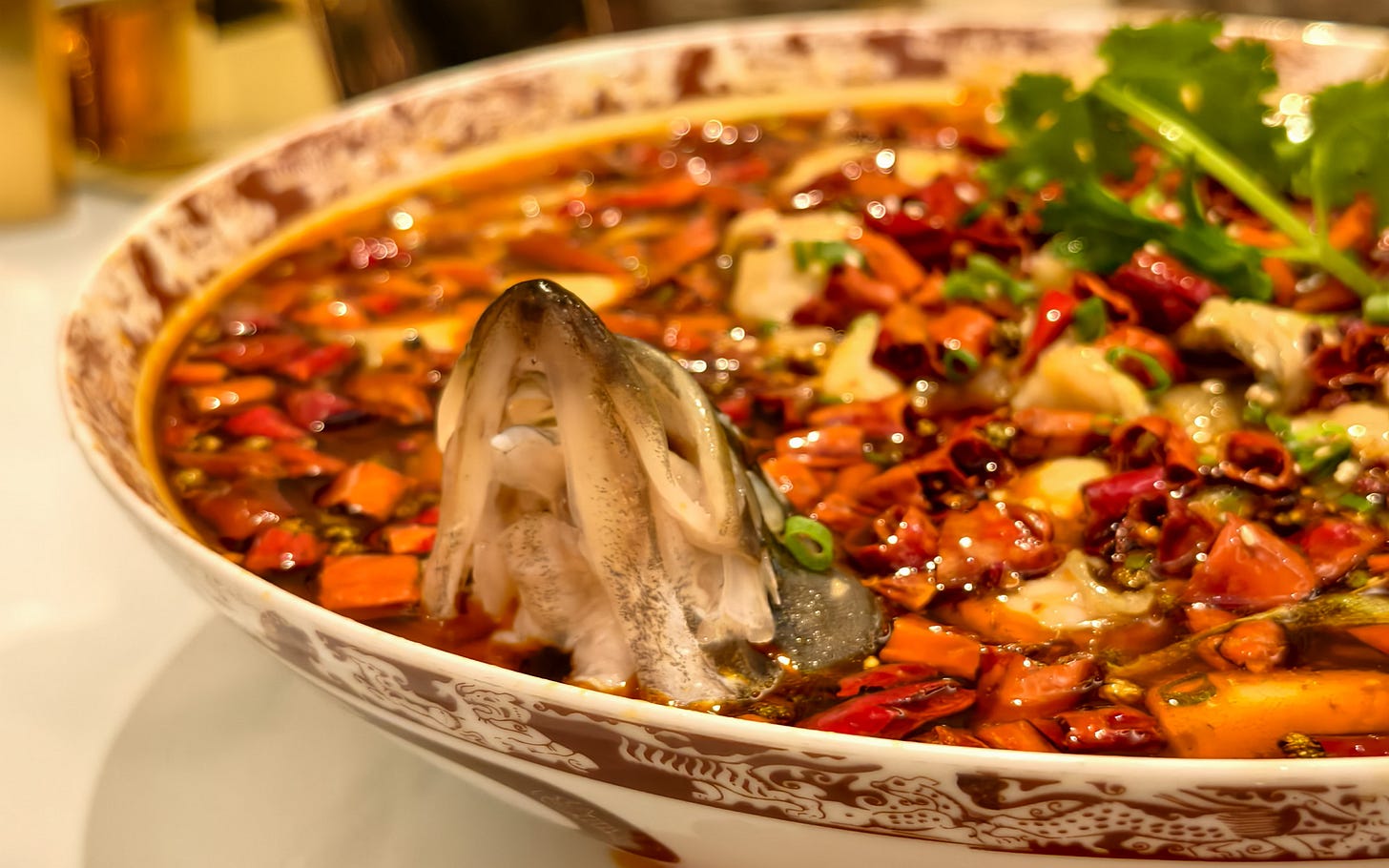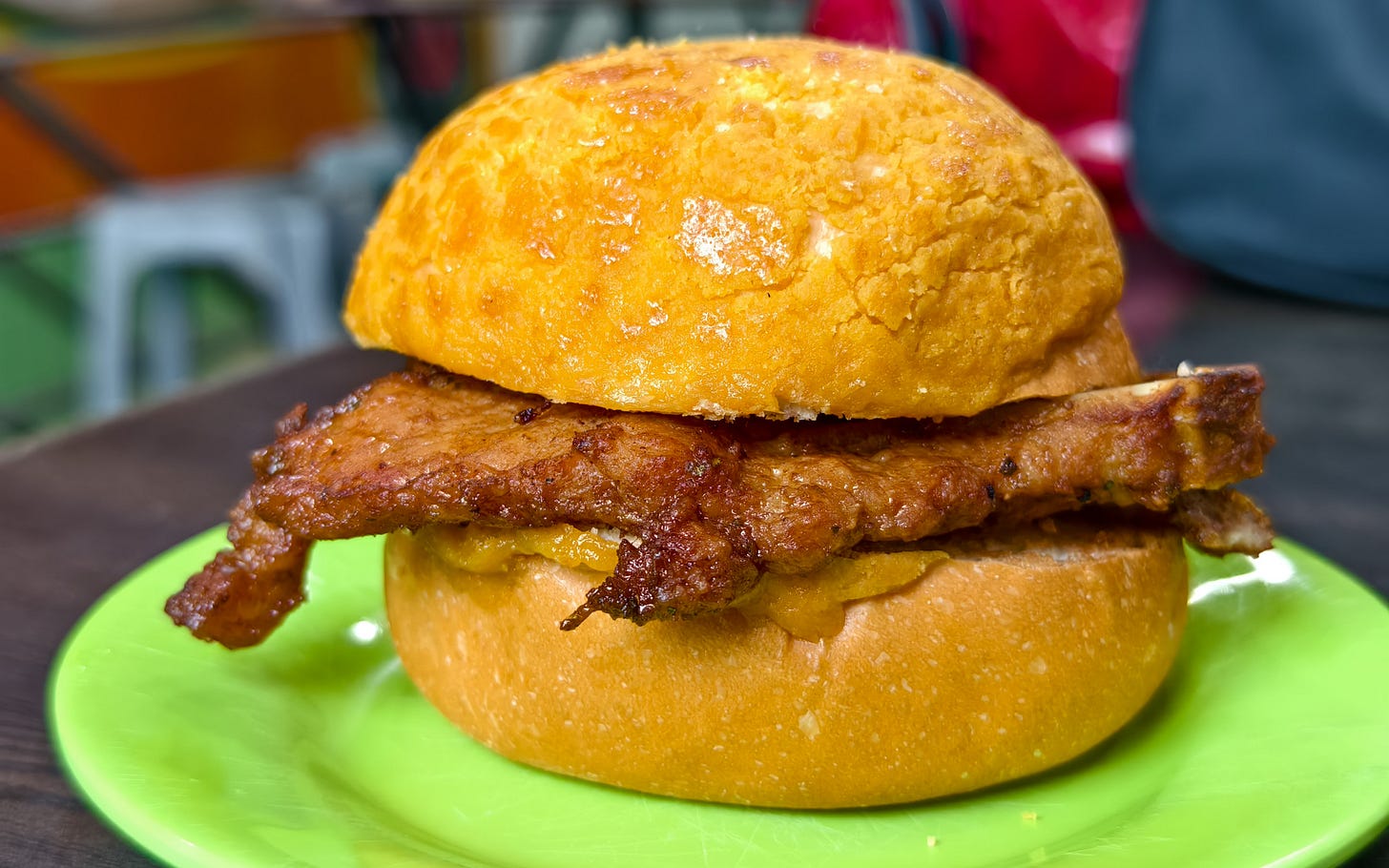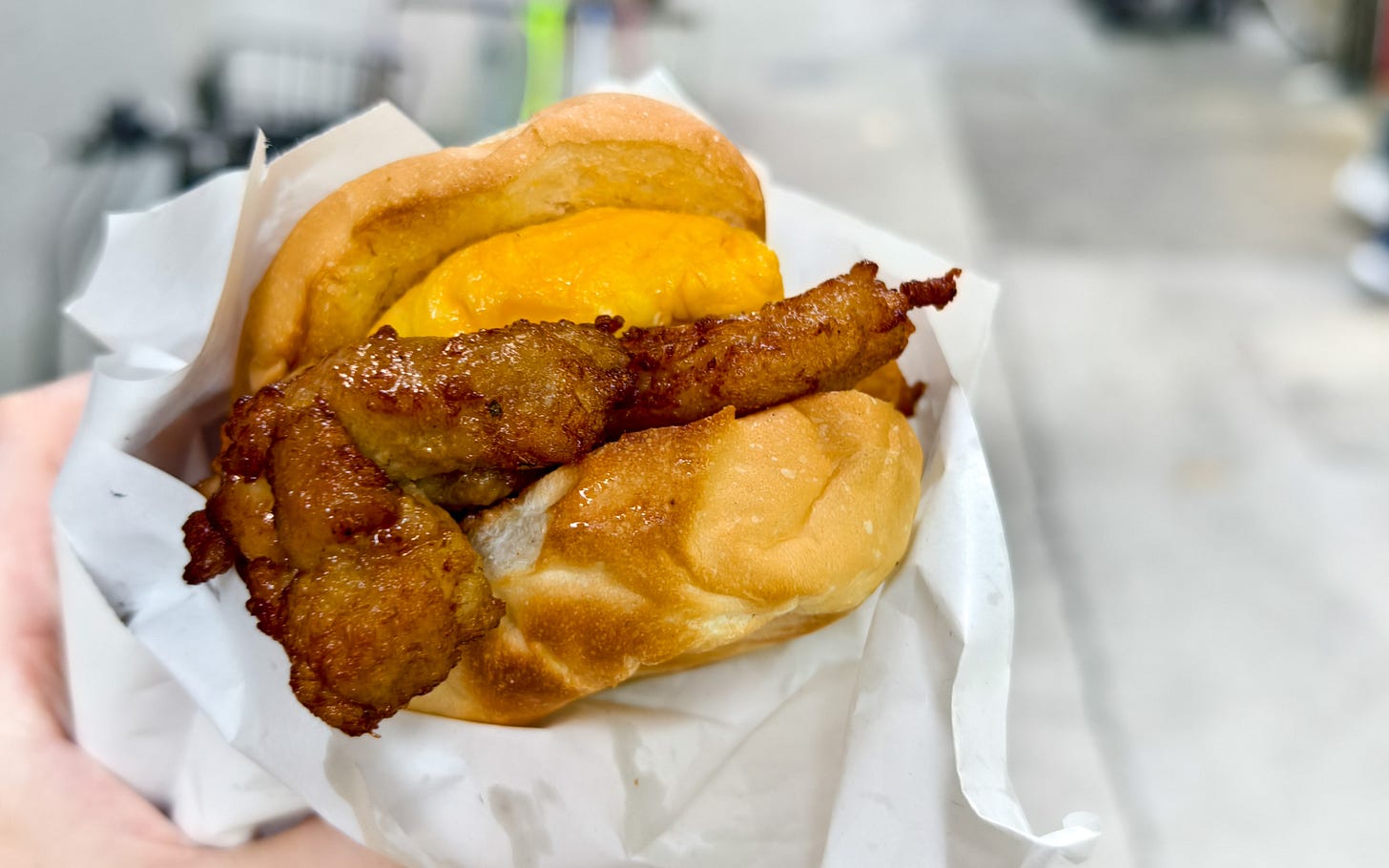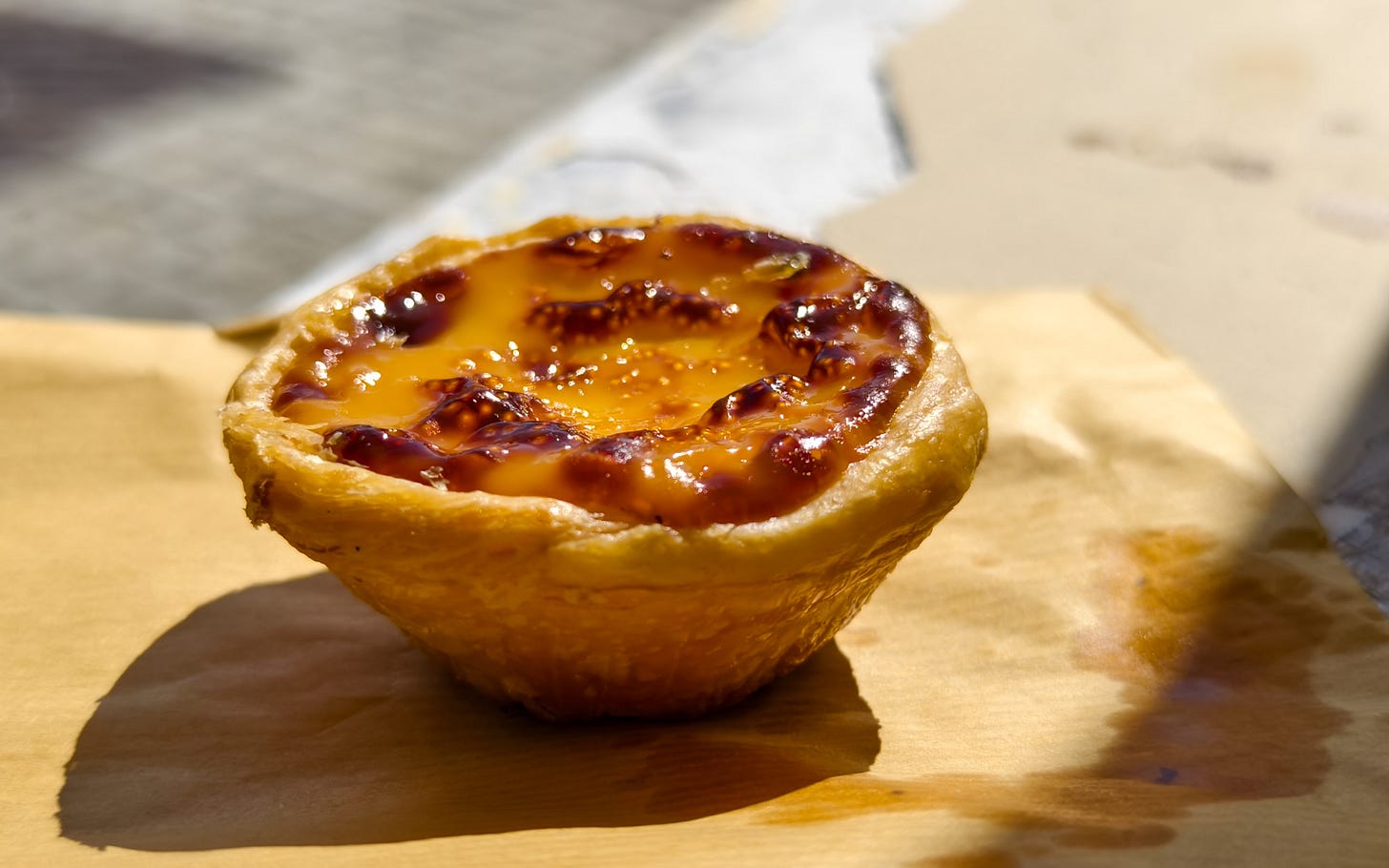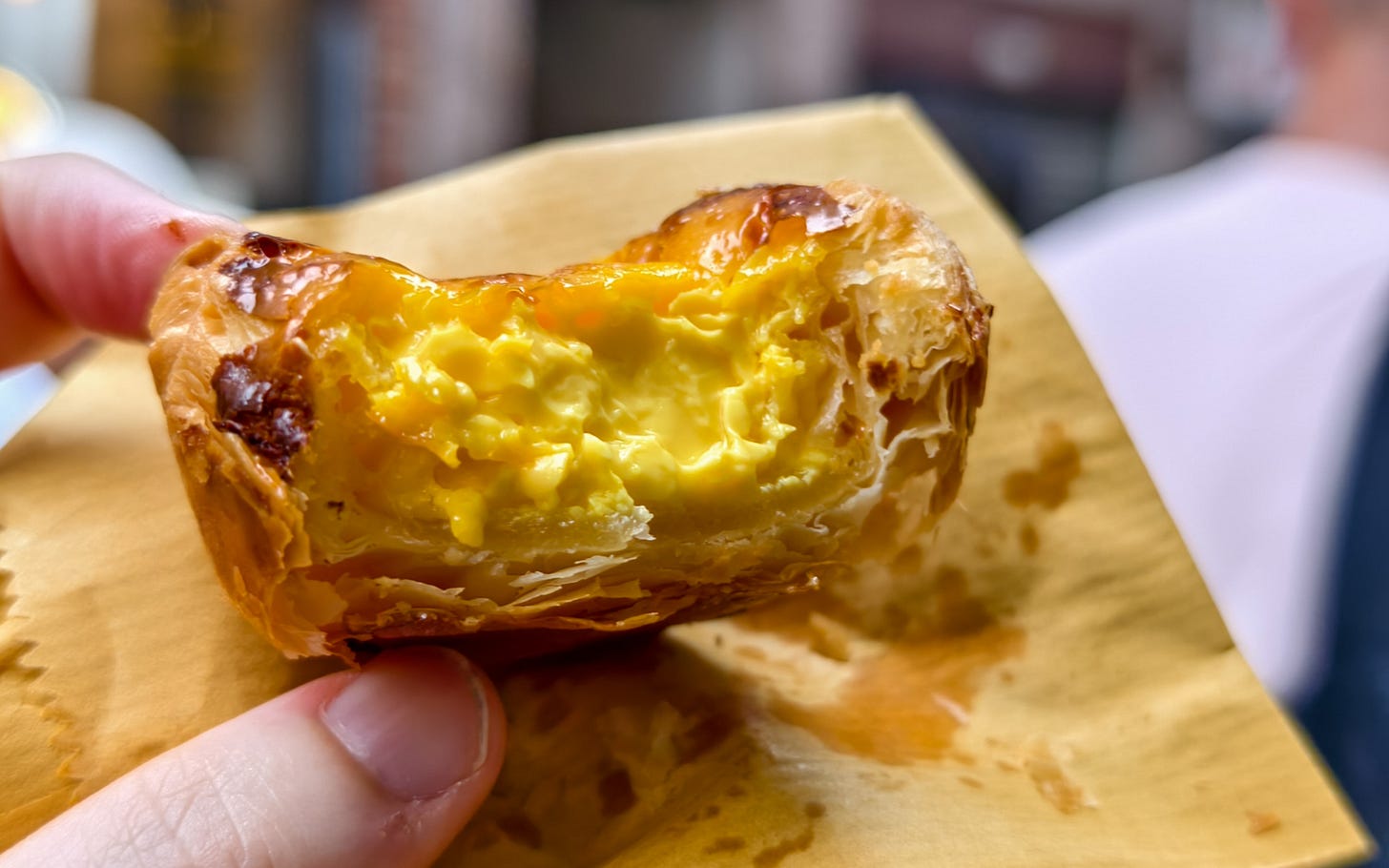I’m currently in the midst of a three-week excursion across China: a first visit to meet my partner’s extended family; a practice session for my haltering Mandarin; and an excuse to eat my way across the People’s Republic.
We’re visiting four cities in total, which felt like an apt excuse for four posts, starting outside of China (well, so long as you don’t ask the Chinese) in Macau.
Vivian and I spent five days here, though saw less of the city than you might think in that time. She was laid low by a vicious flu, I had to work three days of five, and we were based right at the country’s outskirts (admittedly: not very far away at all, Macau is minuscule) in her parents’ boxy university apartment.
That meant an odd mix of meals, home-cooked comfort food intermingled with street food excursions and a memorably awkward morning trip for dim sum alone with Vivian’s mum. When later asked what we spoke about together, her response was succinct: “Nothing.”
The common thread throughout was expectation, both of the food and of myself, a force capable of altering one’s appreciation of every bite.
It can be a little strange the first time you encounter the food your partner was raised on. Dishes that for them hold special significance, that are warm with nostalgia or held up as archetypal instances, turn out to simply be… food. Often good food, even great food, but an experience you can never truly share because you weren’t there when these noodles or that tofu defined the boundaries of their culinary world. Your expectations will forever be different.
Still, it’s hard not to be charmed by a bowl of noodle soup, decorated by fresh tomatoes and a fried egg, as you stumble blearily eyed from a 24-hour journey. Or bing pancakes, freshly fried and wrapped around salmon, offered up for breakfast. Or hong shao rou, red braised pork belly, quivering with fat on a bed of fried rice.
There are challenges as much as charms to eating as a houseguest. At home, breakfast is usually a series of espresso shots and little more, but here food was placed in front of me the moment I emerged into the living room each morning, appetite or not. A family following disparate sleeping, working, and eating schedules meant that rather than familial suppers, food tended to be foisted on me whenever Vivian’s well-meaning mother sensed an opening. And as the guest, I was of course expected to eat my share and then some; if a bowl was ever left un-emptied, a softly spoken “He didn’t like it…” would surely follow.
It’s a strangely pressurised way to eat, the realisation that you’re being judged as fiercely for your eating as you ever have been for your cooking. I was even gently admonished early on for not munching loudly enough, betrayed by my British instinct to avoid messy slurping sounds rather than embrace them. I was expected not only to eat everything, but to enjoy it all, and to do so loudly and enthusiastically, everyday dinners become a strange, appreciative new performance art.
Eating out brought with it another set of expectations, though not only for me. Vivian and her brother John know their Macau staples, but there’s no higher bar for a restaurant to eat than that of your memories.
Wong Kun Sio Kung is a small seafood joint, the type you find across Asia with glaring white lighting and cheap, brightly coloured plastic stools. Here we ate an expensive-for-Macau pot of crab congee, orange-red shell poking gently out of the surface; deep-fried prawn wontons, crisp but delicate from the fryer; and bouncy, bamboo-pressed noodles dusted in shrimp roe and served with a cup of broth to sip after every bite.
Those noodles were the single best thing I ate in Macau, springy and snappy, rich but light, a subtle flavour exploding into something deeper with every sip of the clear broth.
The congee and wontons were great too, but that’s the problem: they were only great. And in Vivian’s rose-tinted eyes, these three dishes were the Macanese Holy Trinity, a life-changing trifecta, the meal she dreamt about returning for. ‘Great’ wasn’t good enough. The wonton skins were too thick, the filling not quite right, the crab congee lacking depth; it had all gone horribly wrong.
It was a similar story at Feng Wei Ju, a Sichuan/Hunan restaurant hosted in one of Macau’s many gaudy casino hotels. Here the Liu siblings had a laundry list of old favourites they needed to revisit, navigating the menu devolving into complex calculations to determine just how many dishes we could fit onto the table.
Boneless beef ribs, tender enough to give way effortlessly at the slightest brush of a chopstick, were the only dish to truly wow me, but gone so fast I hardly got the chance to savour the experience.
But expectation reared its ugly head when it came to the gong bao chicken. A dish Vivian and John had enthused about repeatedly, speculating about how the batter could be so light and subtly sweet. It turned out to be, well, some good fried chicken with chilli and peanuts.
The rest of our order was made up of faithful, expert renditions of a few classics: spicy boiled fish, dan dan noodles, and hefty pork potstickers. This is food I know well enough to recognise, but perhaps not enough to truly appreciate the levels that pull apart the best - by which I mean, it was delicious, but I couldn’t really tell you what, if anything, made this place’s cooking special, or worthy of the two Michelin stars adorning its doors.
The closest I came to eating free of expectation came when I was able to explore a little. Limited time meant a strict focus on the two Macau dishes I knew ahead of time: pork chop buns and Portuguese egg tarts.
The pork chop bun is about as simple as it sounds: a bone-in chop in some bread. That really is about it. For better or worse, the first port of call was the famous one: Tai Lei Loi Kei, with a few branches and a cheery, chubby pig statue out front, expectations high only because it’s the place everybody mentions when you bring up the pork chop bun.
This didn’t impress much: the slightly dry pork tasted like it had been sitting out for a while, though my sweet-crusted pineapple bun was better. Neither was good enough to get away with the under-seasoned style, and I left a little disappointed.
Fortunately, Sei Kee Cafe was there to save the day. Just as old but strangely much less famous, the sandwich here was incomparably better. A juicy, tender chop cooked to order, nestled in a fluffy white bun, with the option to add a roll of omelette on top. The egg didn’t add a whole lot - and this is still a sandwich crying out in need of chilli sauce - but Sei Kee’s rendition explains the international hype.
The egg tart proved more surprising. Pasteis de nada were a brief but powerful obsession when I spent four days in Lisbon a few years ago, as I tore through the city’s top-rated patisseries. Given Macau’s colonial history, I imagined the custard pastry had made its way over a hundred years before, and had long assumed it was the precursor to the fluted version popular in Cantonese dim sum.
I was, it turns out, wrong. The world-famous Macanese Portuguese egg tarts are, in fact, British.
Macau has Englishman Andrew Stow to thank for the dessert’s overseas expansion, and he only brought them over in 1989. In an all-too-familiar story, Stow went on holiday to Portugal, liked the nata, and figured he could probably do a better job himself.
So, Lord Stow’s Bakery was born - the rank, I presume, entirely affected. His take on the tart is closer to Lisbon’s than I’d expected - right down to the delicately layered pastry and blistered top - but the custard is less sweet, dominated by egg rather than vanilla, set with the consistency of jelly.
Emboldened by Sei Kee, I set out to try rival tarts I hoped might beat the big name, expectations well and truly reversed. Stow’s closest competitor is, hilariously, his ex-wife - but sadly Margaret’s Cafe e Nata was shut the one day I found myself nearby. Instead we made do with Bamu, a small bakery opened in 2020 where we were instructed to wait 10 minutes for the pastries to be baked - never a bad sign.
Sadly, these reminded me more of my own ill-fated efforts to bake nata than the real thing. The crisp, dense spirals of pastry were replaced here by layers of puff, while the custard was eggier again, past the point of no return. Much as I hate to, you’ve got to hand it to probably-not-Lord Stow, even if I would say that Lisbon’s best bakers don’t have anything to worry about.
It’s impossible to truly eat free of expectation. Our anticipation of every meal defines our reaction almost as much as the food itself, for good or ill. But at least from here on out, my expectations will be altered: the next stop is Guangzhou, a city where we’ll all be tourists, discovering every dinner as we go.





